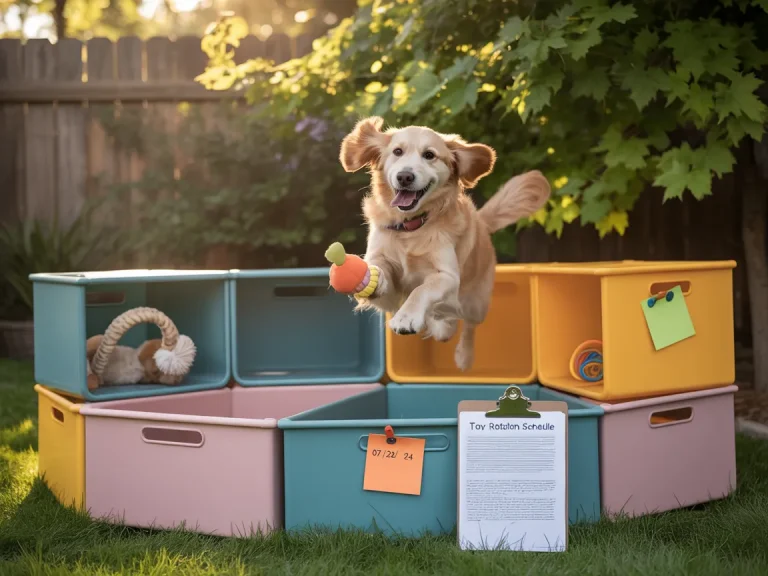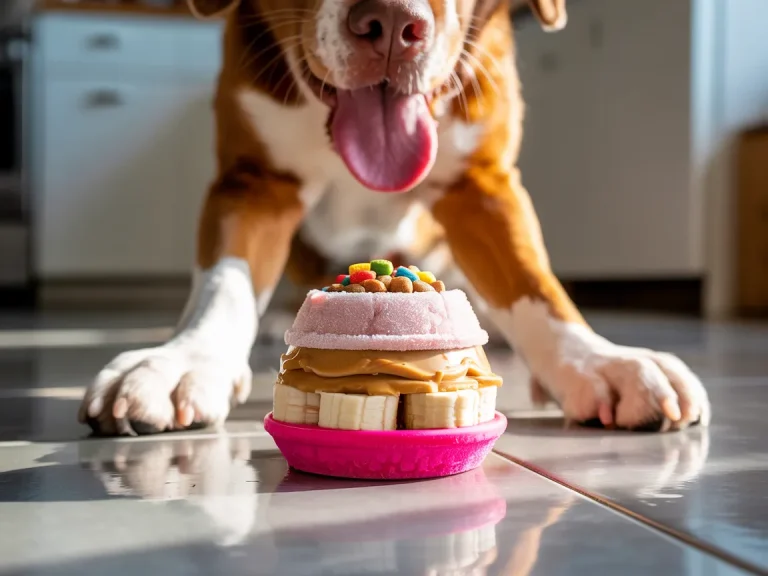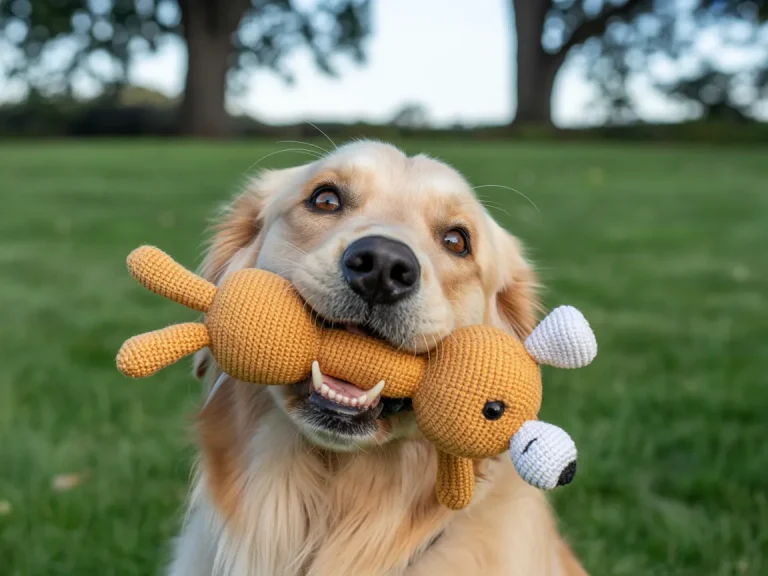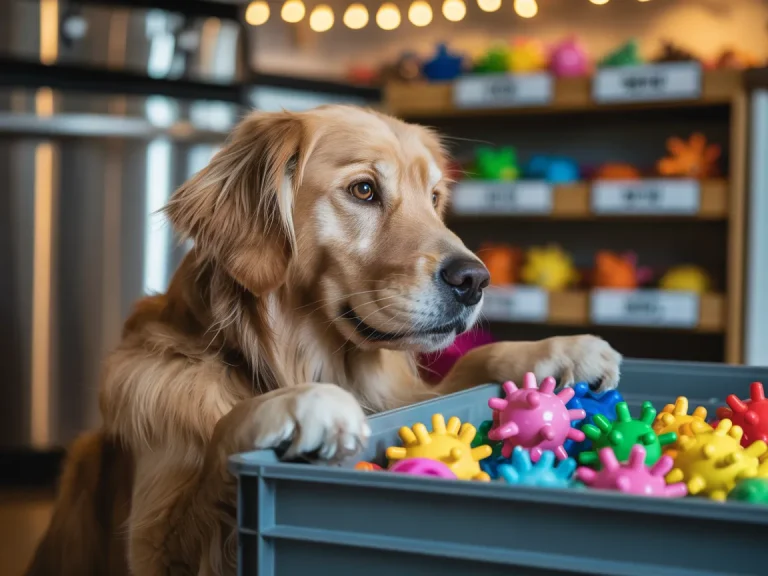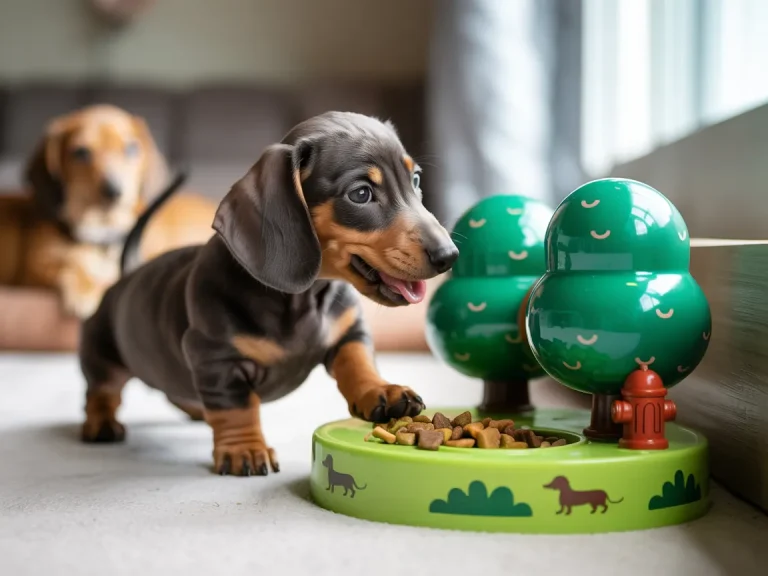Keeping your dog’s brain buzzing is just as important as those daily walks. When the weather turns sour or you’re trying to focus while working from home, an indoor playpen can become a little enrichment playground—a place where boredom turns into “oh, what’s next?” mental fun.
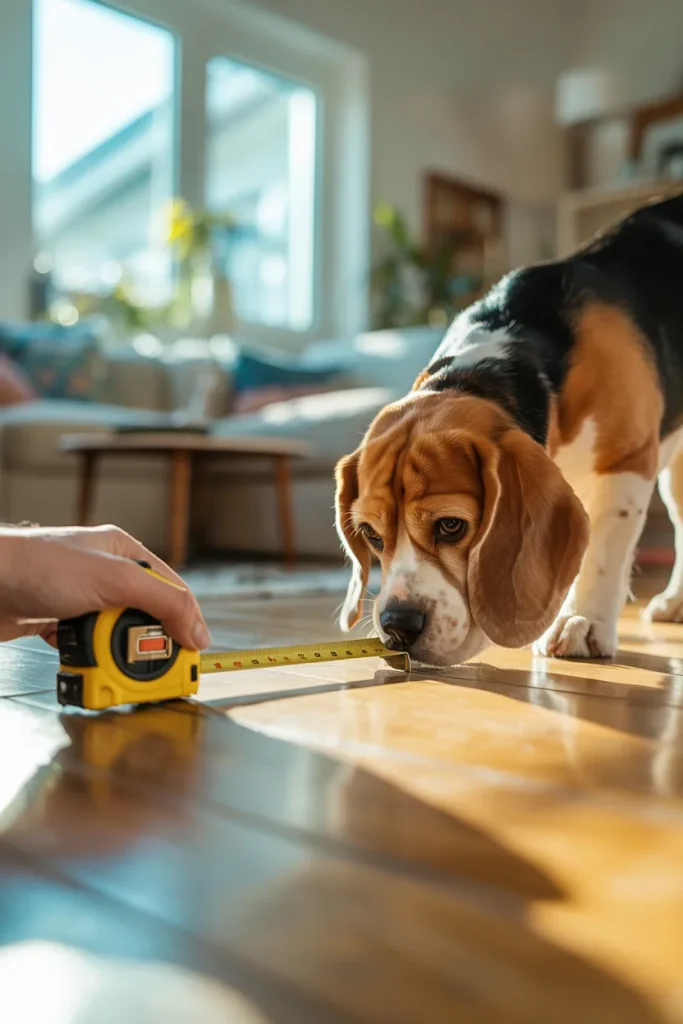
Step 1. Measure the Space and Set Clear Goals
Before you buy anything, grab a tape measure and look at the spot you can dedicate. Give your dog room to move: aim for at least twice their nose-to-tail length in both directions so they can stretch, turn, and not feel boxed in. Then ask yourself: are you building a chill retreat, a puzzle toy gym, or a mix of both? Knowing what you want helps avoid the common pitfall—making a space that feels like a timeout corner instead of a welcome zone.
Imagine you’ve got a 60 cm Beagle. You’re not trying to build a maze; a 1.2 m square gives them breathing room without wasting space. That’s the kind of practical sizing that keeps tails wagging instead of pacing.
Step 2. Choose Stable, Chew-Safe Panels
Not all pens play nice. Skip the wobbly wire setups that clang, teach escape artistry, and generally sound like a haunted rattling. Instead, go for panels made of powder-coated steel or tough plastic—things that shrug off curious teeth and don’t tip over when the zoomies hit. Modular interlocking gates are gold: they let you morph the shape as your dog’s routine or skills change. Slip rubber feet or even pieces of yoga mat under the joints; it quiets the clatter and prevents floor scratches.
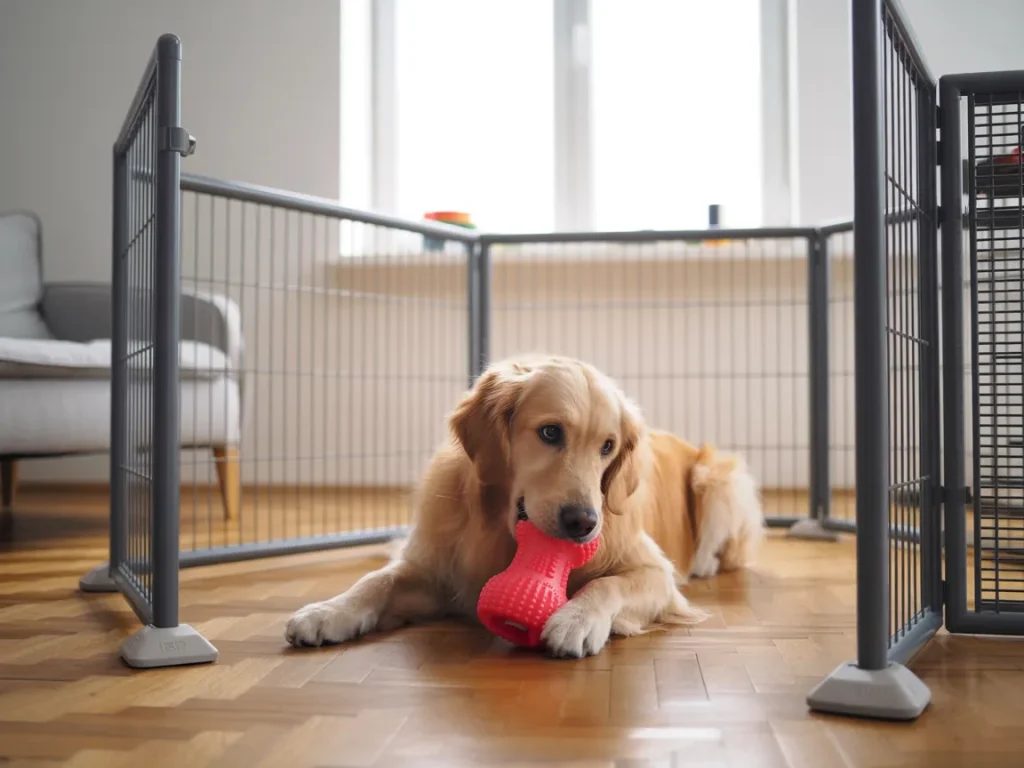
Here’s a small trainer’s trick: buy one extra panel from the start. That extra piece becomes your secret weapon—instant door, divider for introducing a new toy, or a “mystery gate” to change the flow without confusing your pup.
Step 3. Lay an Easy-Clean, Non-Slip Floor
Dogs are gloriously messy. They wrestle with toys, knock over water bowls, and can fling peanut-butter-stuffed kongs with joyful abandon. Give them a base that forgives all of it: washable vinyl mats or interlocking EVA foam tiles soften impact, keep paws from slipping, and feel nicer under joints. If you’re dealing with a youngster still mastering house training, tuck an absorbent pad beneath the mat so swaps are quick and accidental “oops” moments don’t become drama.
And yes, a little maintenance goes a long way. Once a week, wipe the surface with a mix of half vinegar, half warm water. It cuts lingering food smells that might tempt a marking reminder, and it’s safe—no harsh chemical fogging up the space.
Step 4. Zone the Pen for Brain Gains
Think of the pen like a tiny apartment for enrichment: each corner has its vibe, and together they keep your dog curious, calm, and practicing. Here’s how I’d break it up:
- One spot for active puzzles: treat-dispensing balls, snuffle mats, and a rotating “mystery box” that changes so your dog doesn’t learn to tune it out.
- A calm chew nook: a cozy bed anchored so it doesn’t slide, paired with a safe, satisfying chew—this is the decompress zone.
- A narrow skill strip: a little runway for quick cue drills—sit, spin, target, or even a mini “focus” hustle between treats.
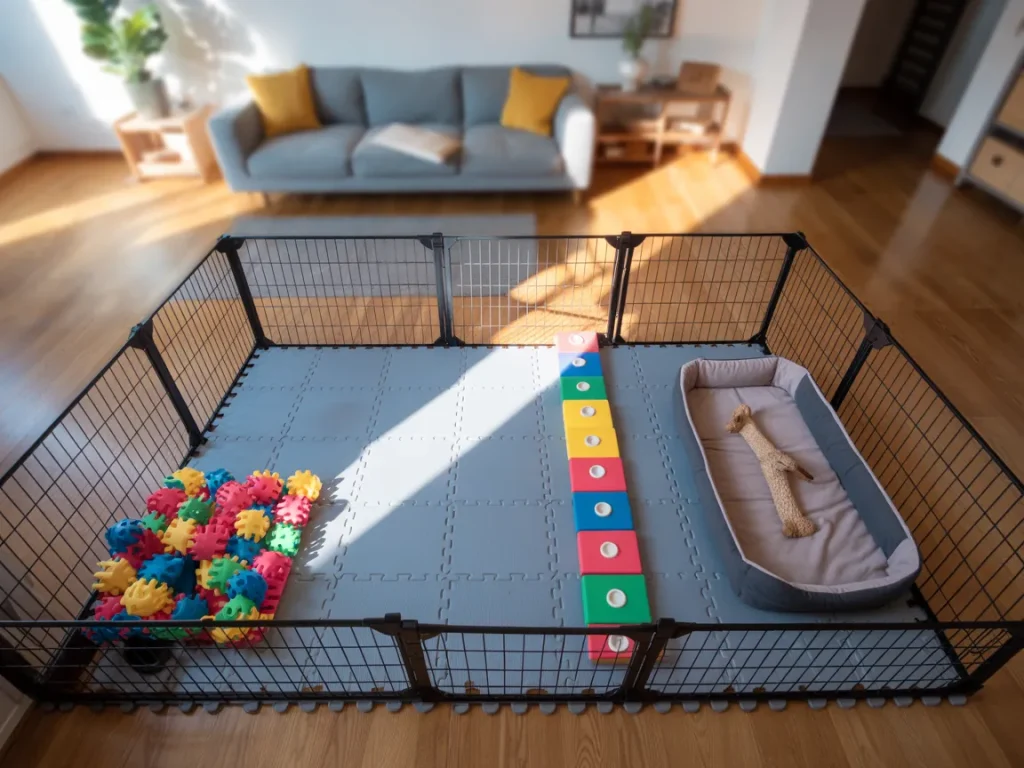
This kind of layout does more than entertain. It sidesteps resource guarding because things are clearly separated, and it imitates the structure of a group training class—your living room becomes a mini canine campus where learning happens in little, digestible bites.
Step 5. Rotate Challenges Every 48 Hours
Dogs get bored fast—variety is the secret sauce for keeping their brains plastic and engaged. Swap at least one game or toy every couple of days so the pen doesn’t become “same old, same old.” You don’t need fancy gear. Pop treats into a muffin tin, cover each cup with a tennis ball, and watch the digging begin. Stick a simple rotation calendar on the fridge (even a sticky note works) so you actually follow through instead of forgetting and letting everything stagnate. Think of this as your personal dog playpen indoor guide to sustained enrichment. Change isn’t just for aesthetics—it’s what makes your dog think, “Ooh, what’s different today?”
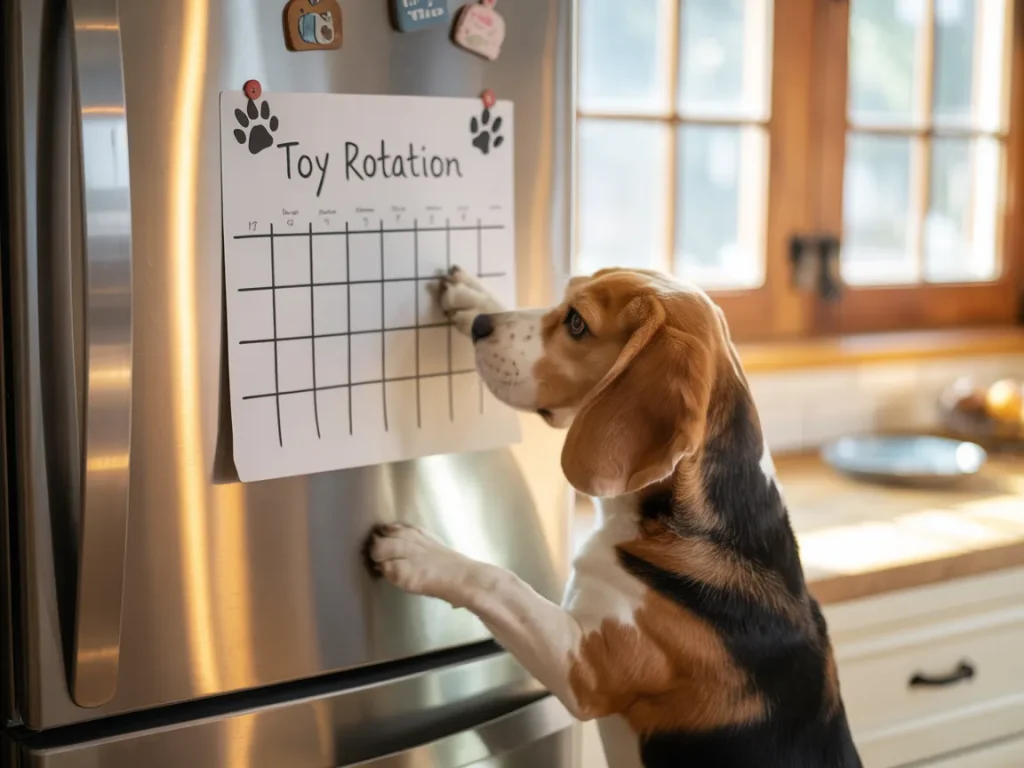
Budget rotation ideas
Freeze leftover broth in silicone molds for a lickable slow-burn reward.
Crumple a paper bag, toss in kibble, and fold/crimp the ends—sound + surprise = joy.
Thread celery through a rubber Kong for a crunchy, weird-texture twist that’s low effort but high interest.
Step 6. Incorporate Mini-Training Sessions
The playpen isn’t just a playground—it’s a classroom with soft walls. Two short sessions a day, right in that space, build a Pavlovian kind of “thinking happens here” expectation.
- Morning impulse control: practice waiting politely at the gate before release. That five minutes of patience sets a tone.
- Evening brain burn-off: rapid-fire cues—“spin,” “bow,” “place”—keep the mind sharp and leave residual satisfaction from solving little puzzles.
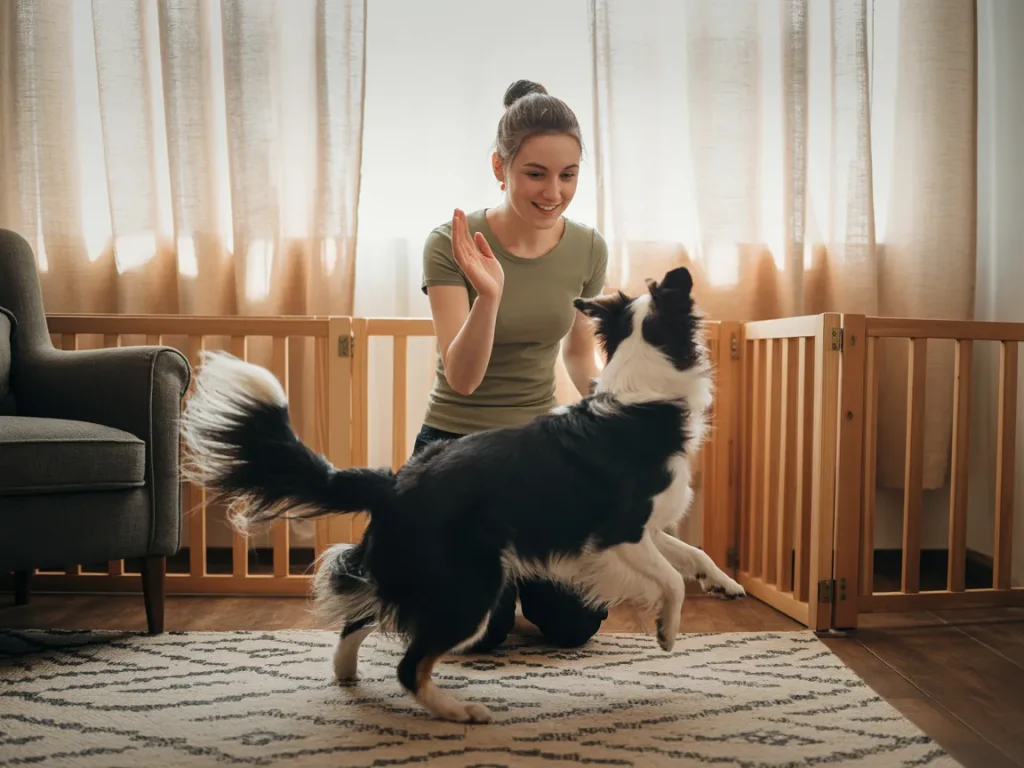
Stick to the routine and soon enough your dog will trot into the pen the moment you reach for the clicker, ready to engage. It becomes less about you forcing practice and more about them showing up for their favorite part of the day.
Step 7. Add Sensory Enrichment for All Five Senses
If you’ve done the basics, it’s time to layer in texture, scent, sound, sight, and taste. Think of it as giving your dog a mini spa-meets-brain-gym session.
Sight: Hang a kid-safe mirror just outside so curious pups can catch their own reflection. Some dogs find it amusing; others treat it like a new “buddy” to check in with.
Sound: Low-volume audiobooks or calm, spoken-word tracks work better than chaotic TV. The rhythm of a human voice can be oddly grounding—like a soft background narration to their day.
Smell: A drop of dog-safe lavender (very sparingly) on a cloth, clipped up high so the scent drifts without being overbearing, adds a calming layer. Smell is their superpower—use it thoughtfully.
Touch: Rotate in small patches of different surfaces—turf, a bubble-wrap path, soft rugs—so paws and pads get novel feedback. It’s like a little sensory trail right underfoot.
Taste: During downtime, offer safe new bites: a few blueberries, cucumber chunks, or other vet-approved produce. It’s enrichment that’s literally delicious.
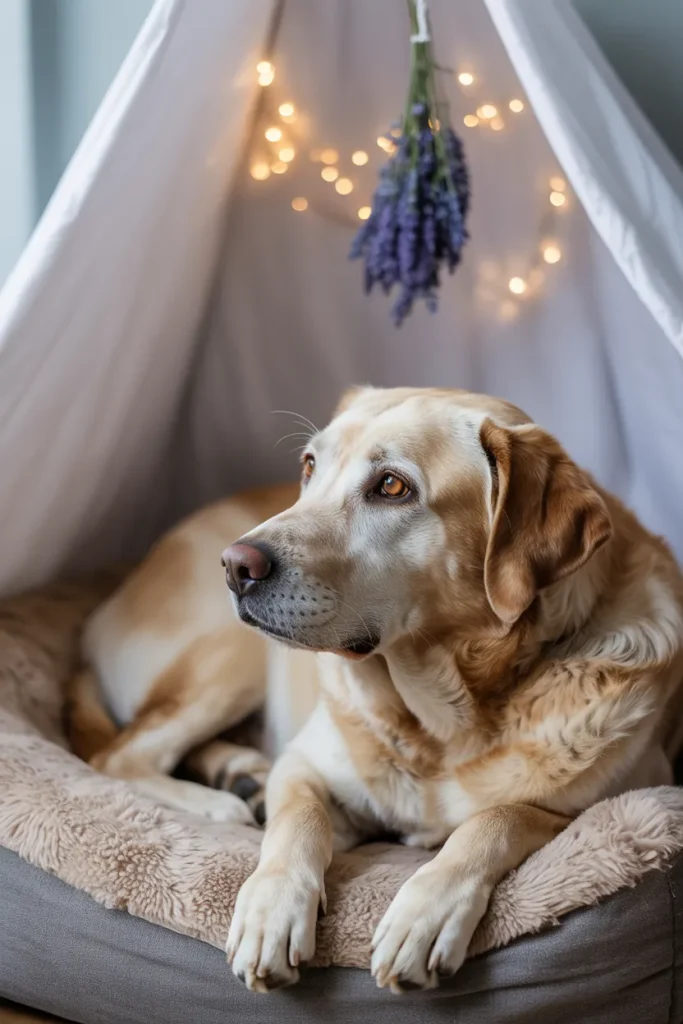
Safety reminder
Never leave a new sensory item unsupervised the first few times. Watch for signs of overload—lip licking, yawning, turning away, or freezing. If something causes stress, pull it, reset, and reintroduce slower or skip it.
Putting It All Together: A Daily Flow
Here’s how a full day with the pen could feel—structured but flexible, predictable but never stale:
- 7 a.m. Potty break, then breakfast served as a puzzle inside the pen.
- 9 a.m. Five-minute impulse-control drill at the gate—waiting builds self-restraint.
- 12 p.m. Quick “sniffari” outside, then back in for a change-up.
- 2 p.m. Swap or rotate one toy, refresh the chew station.
- 4 p.m. Trick session on the skill strip—short, upbeat, rewarding.
- 7 p.m. Dinner in a slow-feeder, lights dimmed for wind-down.
- 9 p.m. Calm corner: lavender scent, mirror time, then bedtime just outside the pen.
Do this regularly and the pen stops being a “containment zone” and becomes a trusted, stimulating hub—a place your dog associates with learning, comfort, and a bit of fun. These practical dog playpen indoor tips make sure the space never feels like a timeout cell, but a mini campus where their brain grows a little every day.
Common Mistakes and How to Avoid Them
Overcrowding with Toys
More isn’t better here. A cluttered puzzle corner feels like sensory overload. Keep it tight—three active challenges at a time. Rotate them, sure, but don’t dump the whole toybox in there and expect focus.
Inconsistent Rules
If the pen sometimes means “timeout” and other times “fun school,” give your dog signals. Timeout = lights dimmed, chews tucked away, quiet. Enrichment = lights up, background hum (soft music or a calm audiobook), and toys out. Dogs read context like we read body language—help them know what’s expected.
Neglecting Adult Dogs
This space isn’t just a puppy playground. Adult and senior dogs need their brains tended too—keeping their minds sharp with low-impact puzzles helps stave off cognitive decline. Trying to figure out how to adapt your dog playpen indoor setup for an older companion? Lower the mirror so it’s at their eye level and swap in softer, supportive flooring—think memory-foam-feel over hard plastic.
FAQ: Quick Answers for Busy Owners
Can I repurpose a baby playpen?
Yep—as long as it’s sturdy, chew-safe, and you can clean the floor easily. If your dog’s a jumper, rig a top panel so nothing becomes a surprise escape route.
How often should I deep-clean the setup?
Wipe down spills and sniff-test trouble spots daily. Give the whole thing a proper scrub every two weeks—sooner if you catch a smell. That vinegar wipe-down from earlier helps keep things fresh between full cleans.
Is this strategy suitable for multi-dog households?
Absolutely. Start introductions one pup at a time. Use temporary dividers so each dog gets their own “station” and you’re not triggering resource guarding. Keeping their spaces distinct keeps the peace and the enrichment effective.
Conclusion
You don’t need flashy gear or a huge budget to build a playpen that fires up your dog’s brain. What matters is the thought behind it: measured space, clear zones, smart rotation, and a little daily training sprinkled in. Follow these steps, keep it consistent, and that simple enclosure becomes a reliable, ever-evolving classroom—one your dog actually looks forward to entering. Rain or shine, it’s a place to learn, unwind, and keep their mind moving.
Disclaimer: This article is for informational purposes only and does not constitute professional veterinary advice. Always consult a licensed veterinarian or certified dog trainer regarding the specific needs and health of your dog.
